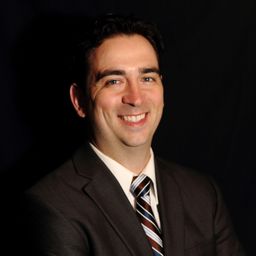
Dr. Matthew Schlenker
Matthew B. Schlenker is an Assistant Professor and University of Toronto Glaucoma, Cataract, & Anterior Segment surgeon at Kensington Eye Institute, Trillium Health Partners, and Toronto Western Hospital. He received his Bachelor’s Degree (Magna Cum Laude) in Economics from Yale University and then worked as a financial analyst at Bear Stearns and as a business analyst at McKinsey & Co. He received his MD (with Honours) and Ophthalmology training at the University of Toronto, where he was a Chief Resident. He then completed a Glaucoma and Advanced Anterior Segment Fellowship at Trillium Health Partners and a Master of Science in Epidemiology at the Harvard School of Public Health.
He is the Chair of Resident Research in the Department of Ophthalmology & Vision Sciences at U. of T. and sits on the Kensington Research Committee. He is a regular presenter at both local and international academic conferences and has published in Ophthalmology, American Journal of Ophthalmology, British Journal of Ophthalmology, Journal of Cataract and Refractive Surgery, among other journals.
Financial disclosure: Dr. Schlenker has/had an affiliation (financial or otherwise) with a commercial organization:
1.
Aeques
2.
Alcon
3.
Allergan
4.
Bausch
& Lomb
5.
Johnson
& Johnson
6.
Santen
7. Thea-Labtician
Sessions in which Dr. Matthew Schlenker participates
Friday 10 June, 2022
Learning Objectives:At the end of this session participants will be able to:Describe the current surgical options available in management of glaucoma in Canada – filtering surgery and angle based surgeryIntegrate the most recent evidence for each surgical option and apply them to their clinical decision makingAssess new development in genomics and how it can optimize our surgical managementCanMEDS Roles:
Sessions in which Dr. Matthew Schlenker attends
Thursday 9 June, 2022
Friday 10 June, 2022
SOLD OUTImplantation of an IOL in the absence of capsular support remains challenging for many surgeons. Intrascleral haptic fixation using the flanged, double needle (Yamane) technique allows the surgeon to scleral fixate a 3 piece IOL in the setting of complete zonular compromise. The technique leaves the conjunctiva and sclera relatively undisturbed compared to other scleral fixation techniques while also reducin...
Learning Objectives:Identify common reasons for discrepancy between structure and function evaluations of glaucoma patientsDescribe the difference between glaucomatous and non-glaucomatous abnormalities on glaucoma diagnostic testingAppreciate the nuances of clinical decision making in cases where diagnostic testing is ambiguousCanMEDS Roles: Medical Experts, Scholar
Learning Objectives:Assess the effect of various new surgical procedures on IOP and their potential complications through researchDescribe the quality of meta-analysis performed in glaucoma literatureDescribe side effect associated with commonly used glaucoma medicationCanMEDS Roles: Scholar, Collaborator
Authors: Tarek A. Bin Yameen, James Armstrong, Lotte Scheres, Paola Marolo, Sophie Lemmens, Eunice Chew, BrahimKhouri, Henny Beckers, AntonioFea, Ingeborg Stalmans, ChelvinSng, William McCollum, Juan Battle, Matthew Schlenker, Iqbal 'Ike' Ahmed.Author Disclosure Block: T.A. Bin Yameen: None. J. Armstrong: None. L. Sch...
Authors: James J. Armstrong, Matthew B. Schlenker, Iqbal Ike Ahmed. University of Toronto.Author Disclosure Block: J.J. Armstrong: None. M.B. Schlenker: Santen Pharmaceutical Co.; Alcon ; Allergan; Johnson & Johnson Vision; Labtician Thea; Light Matter Interaction Inc. I.I. Ahmed:
Saturday 11 June, 2022
Learning ObjectivesAt the end of this session, participants will be able to:Review latest techniques in corneal transplantation and when certain techniques would be most appropriateReview management strategies to treat non-healing corneal woundsDefine the signs and symptoms of Limbal Stem Cell DeficiencyDescribe the treatment modalities currently in use to treat&n...
Learning Objectives:• Integrate new development in genomics to their clinical practice in order to optimize their care for patients • Better communicate the implication of genomics research in their treatment• Assess and apply new knowledge in visual field analysis in monitoring glaucoma disease progression• Describe the application of artificial intelligence in glaucoma genomicsCanMEDS Roles: Health Advocate, Communicator
Learning ObjectivesAt the end of this session, participants will be able to:Identify pearls to simplify cataract surgeryDescribe tips on management of complex cataractsCanMEDS Roles: Medical expert, Scholar&n...
Learning ObjectivesAt the end of this session, participants will be able to:Identify ways to optimize cataract surgery outcomesReview common comorbid conditions present in cataract patientsDescribe what is new in IOL technologyCanM...
This course will be help attendees become more comfortable and proficient with valveless tube surgery. The attendee will be able to become proficient in ligation and fenestration techniques in a simulated surgical setting. They will be able to implement techniques and strategies to improve surgical workflow and efficiency when using these techniques. This course will be useful for glaucoma surgeons of all levels.Learning ObjectivesDemon...
Sunday 12 June, 2022
Learning ObjectivesAt the end of this session, participants will be able to:Recognize features of optic neuritis requiring prompt investigation and more aggressive managementDescribe the challenges of and barriers to delivering eye care to indigent populationsRecognize features of optic neuritis requiring prompt investigation and more aggressive management
Learning ObjectivesAt the end of this session, participants will be able to:Provide an update on available technologyeDescribe recent research in cataract surgeryCanMEDS Roles: Medical expert, Scholar &n...
Learning ObjectivesAt the end of this session, participants will be able to:Utilize OCT Imaging to differentiate various types of Pigmented Epithelial DetachmentsUtilize OCT Imaging of the choroid...
Learning ObjectivesAt the end of this session, participants will be able to:Explore established and newer cataract practicesReview research relating to cataract surgery practicesManage common and uncommon symptoms after cataract surgery
This course will give the attendee hands-on experience with the MIGS devices offered at the course. Key surgical pearls will be shared in order to optimize surgical outcomes in the attendee’s own patients. The course instructors will also share clinical experience and discuss patient selection.Learning ObjectivesAt the end of this course, participant...